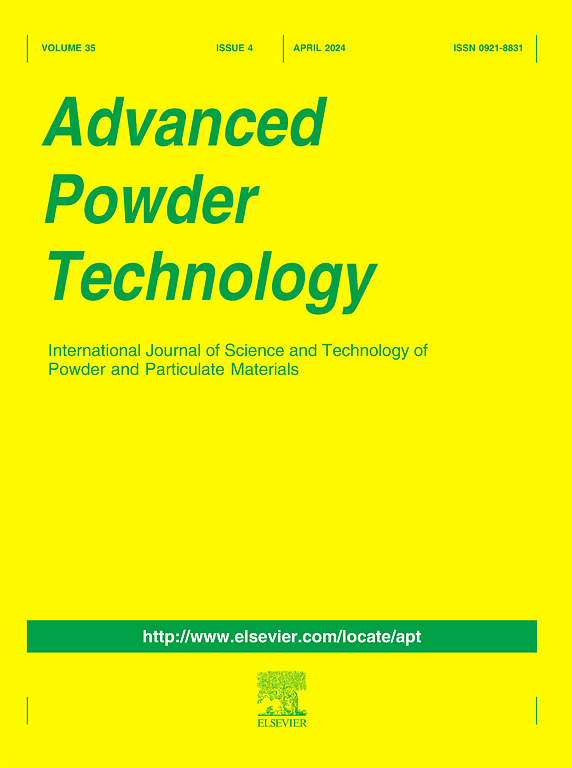Engineering heterogeneous Z-scheme photocatalysts Fe-BTC/CuInS2/BiVO4 integrated with carbon quantum dots to enhance the efficiency of Cr(VI) reduction and RR-195 degradation under visible light
IF 4.2
2区 工程技术
Q2 ENGINEERING, CHEMICAL
引用次数: 0
Abstract
In this study, Fe-BTC/CuInS2/BiVO4 composites (with Fe-BTC content ranging from 10 to 30 wt%) were synthesized followed by the incorporation of carbon quantum dots (CQDs) to form FCB-CQD photocatalysts. The resulting materials exhibit several key advantages, including high surface area, large pore volume, small particle size, efficient visible light absorption, and improved charge transport properties. The integration of CQDs significantly enhanced charge separation and reduced electron–hole recombination. A Z-scheme charge transfer mechanism was proposed and validated, enabling the FCB-CQD photocatalysts to achieve highly efficient photocatalytic reduction of Cr(VI) to Cr(III) and degradation of Reactive Red 195 (RR-195) under visible light. The 20%FCB-CQD sample achieved removal efficiencies exceeding 98 % for both pollutants. Key operational parameters, such as catalyst dosage, pollutant concentration, pH, reactive species involvement, and photocatalyst stability, were systematically investigated. Electrochemical and optical characterizations were used to construct the band structure and elucidate the electron transfer pathway. Scavenger experiments confirmed the dominant active species involved in each process, providing insight into the underlying photocatalytic mechanisms. These findings demonstrate the promising potential of FCB-CQD as an efficient and reusable photocatalyst for environmental remediation applications.

与碳量子点集成的Fe-BTC/CuInS2/BiVO4工程非均相z型光催化剂在可见光下提高Cr(VI)还原和RR-195降解效率
本研究制备了Fe-BTC/CuInS2/BiVO4复合材料(Fe-BTC含量为10% ~ 30%),并掺入碳量子点(CQDs)形成FCB-CQD光催化剂。所得到的材料具有几个关键的优点,包括高表面积、大孔体积、小粒径、有效的可见光吸收和改进的电荷传输性能。CQDs的集成显著增强了电荷分离,减少了电子-空穴复合。提出并验证了Z-scheme电荷转移机制,使FCB-CQD光催化剂在可见光下实现了Cr(VI)到Cr(III)的高效光催化还原和活性红195 (RR-195)的降解。20%FCB-CQD样品对两种污染物的去除率均超过98%。系统地考察了催化剂用量、污染物浓度、pH值、反应物质参与和光催化剂稳定性等关键操作参数。利用电化学和光学表征构建了能带结构并阐明了电子转移途径。清道夫实验证实了参与每个过程的主要活性物种,为潜在的光催化机制提供了见解。这些发现表明了FCB-CQD作为一种高效、可重复使用的光催化剂在环境修复中的应用前景。
本文章由计算机程序翻译,如有差异,请以英文原文为准。
求助全文
约1分钟内获得全文
求助全文
来源期刊

Advanced Powder Technology
工程技术-工程:化工
CiteScore
9.50
自引率
7.70%
发文量
424
审稿时长
55 days
期刊介绍:
The aim of Advanced Powder Technology is to meet the demand for an international journal that integrates all aspects of science and technology research on powder and particulate materials. The journal fulfills this purpose by publishing original research papers, rapid communications, reviews, and translated articles by prominent researchers worldwide.
The editorial work of Advanced Powder Technology, which was founded as the International Journal of the Society of Powder Technology, Japan, is now shared by distinguished board members, who operate in a unique framework designed to respond to the increasing global demand for articles on not only powder and particles, but also on various materials produced from them.
Advanced Powder Technology covers various areas, but a discussion of powder and particles is required in articles. Topics include: Production of powder and particulate materials in gases and liquids(nanoparticles, fine ceramics, pharmaceuticals, novel functional materials, etc.); Aerosol and colloidal processing; Powder and particle characterization; Dynamics and phenomena; Calculation and simulation (CFD, DEM, Monte Carlo method, population balance, etc.); Measurement and control of powder processes; Particle modification; Comminution; Powder handling and operations (storage, transport, granulation, separation, fluidization, etc.)
 求助内容:
求助内容: 应助结果提醒方式:
应助结果提醒方式:


